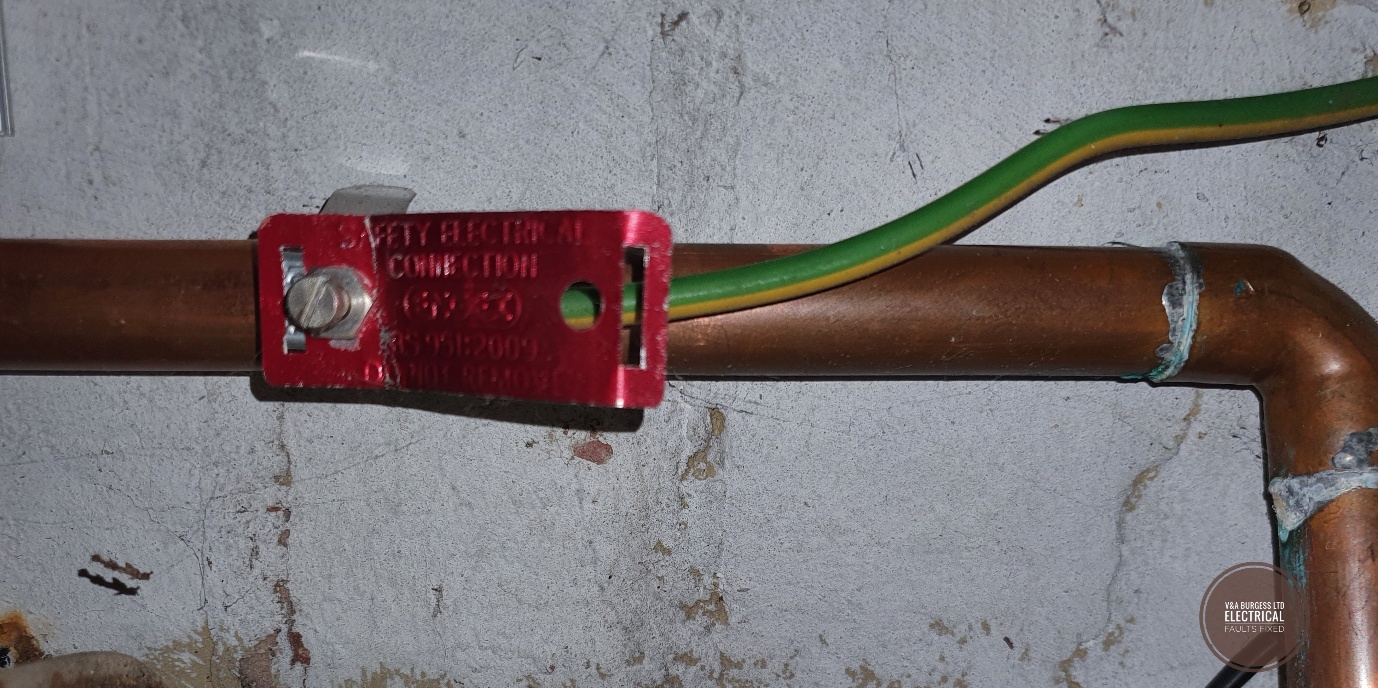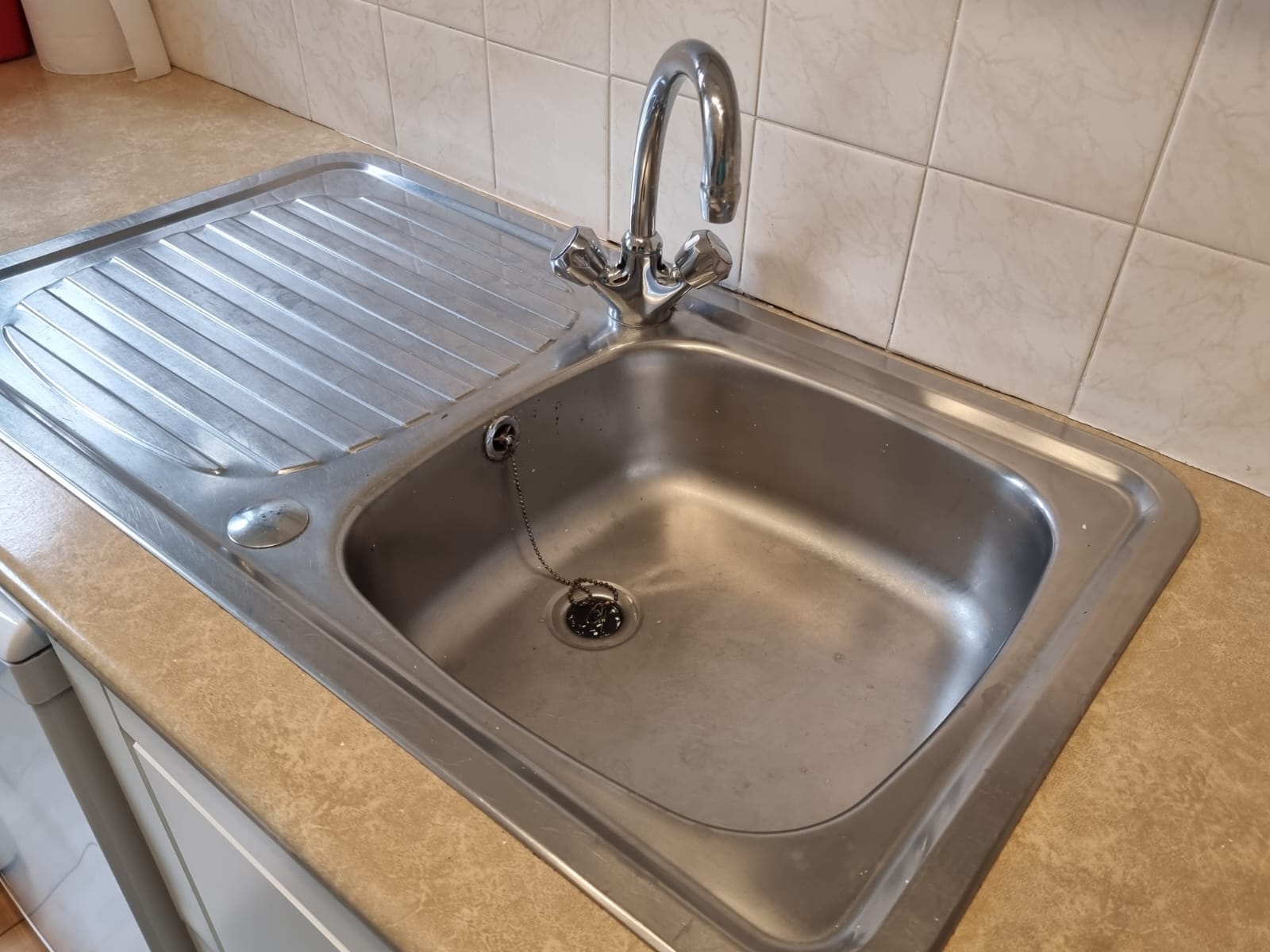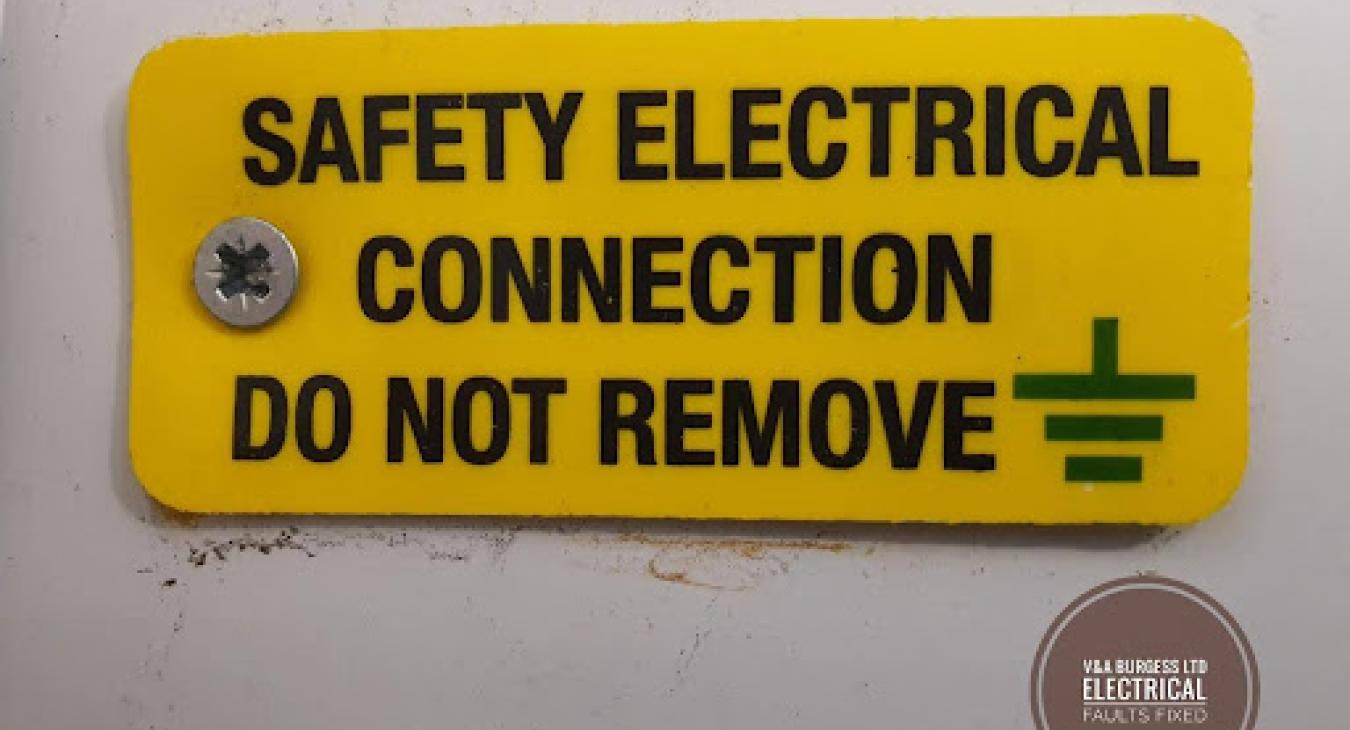Safety Electrical Connection Do Not Remove
It is a common misconception that all pipework should be earthed.
Table of Contents
- Why earth pipework?
- WHY???
- What is the solution?
- Does bonding and earthing eliminate shocks?
- How do I know if my pipework needs bonding / earthing?
- What else is used to prevent electrical shocks?
- My pipes look like they are already earthed or bonded
- The kitchen sink has earth wires connected, what are they?
- How does an electrician check an underground water pipe?
- Where should pipework be bonded?
- Conclusion
It is a common misconception that all pipework should be earthed.In many cases, metallic pipework WILL require a connection to earth in order to avoid a dangerous voltage appearing during an electrical fault but in some cases, pipework will NOT need to be connected to the earthing. Let me explain...
Back to top1) Why earth pipework?
Where metal pipework is installed in a building that also contains an electrical system, there is a potential risk that the pipework provides a nice low resistance path to earth. This can be a problem should someone touch a live part and simultaneously touch the metal pipework unless the pipework is connected to the earthing system.
Back to top2) WHY???
Well, it’s all to do with potential difference or voltage to you and me. Picture a faulty electrical appliance like a toaster or kettle; the appliance has developed an issue making its metal case become live. The case of the appliance is likely to reach around 230 volts, which alone may cause you to experience an electric shock. If you were to also then touch a metal tap, pipe, or other component of the plumbing system then a difference in potential would occur. Metal pipes that enter the ground such as the gas pipe or water pipes are likely to remain at 0 Volts (zero). This means there is a potential difference between the faulty appliance case and pipe of 230 volts!!! This would result in a serious or fatal shock to humans.
Back to top3) What is the solution?
The solution to ensuring no potential difference exists between pipework and the rest of the exposed conductive parts of the electrical system (metal sockets, switches, appliance casework etc) is to connect them all to the same means of earthing. This means running a protective conductor from the main earthing terminal to the metal water pipe and gas pipes. NOW, when the same fault occurs with the appliance, the resultant voltage on any pipework will reach the same potential as the faulty appliance casework.
Once both parts are at 230 volts, there is no potential difference between them meaning that a fatal or serious shock is far less likely.

4) Does bonding and earthing eliminate shocks?
Unfortunately, not. Under fault conditions an electric shock is still possible due to the quality of your earth connection to the ground upon which you are stood. Bonding and earthing will seriously reduce the potential severity and duration of shocks. There are many more components of an electrical system that will help to reduce the risk of electric shocks which we will talk about below.
Back to top5) How do I know if my pipework needs bonding / earthing?
The only way to correctly establish if pipework should be bonded is to consult a qualified electrician. Your electrician will carry out a number of tests using specialised test equipment to determine if your metallic pipework is introducing a ground potential. Generally speaking, incoming plastic pipes should not need earth bonding BUT until testing and inspection is carried out by a qualified professional, this cannot be confirmed.
Back to top6) What else is used to prevent electrical shocks?
As well as earthing and bonding, in most electrical installations there are protective devices such as the RCBO, RCD, RCCB and AFDD that will help to reduce the likelihood of an electric shock. These devices detect any stray electrical currents that would otherwise increase electric shock risk. These trip switch devices are so sensitive that they can detect the tiniest electrical currents missing from an electrical circuit and shut the circuit off in milli-seconds before any serious harm is done.
Back to top7) My pipes look like they are already earthed or bonded
Your pipework could already be connected to earth correctly. Alternatively, what you could be seeing is supplementary bonding. If you are in any doubt as to the sufficiency of your pipework earthing, its electrical continuity or condition then you should contact an electrician to check if your bonding is ok.
Back to top8) The kitchen sink has earth wires connected, what are they?
If your home was built or rewired between the early 1990s and around 2008 then it was very common to find supplementary bonding connections used to reduce the chances of dangerous voltages in kitchens, bathrooms, and other areas of the property. This supplementary bonding can be confirmed as earth wires connected to metal pipes and sinks in kitchens and bathrooms. The lights and sockets may also be connected with these additional earth wires. These wires are much thicker than a normal circuit protective conductor and are designed to bring all parts of the area to the same voltage whenever a fault occurred.

9) How does an electrician check an underground water pipe?
The electrician will disconnect the earthing conductor for your electrical installation near where the main electrical service enters the building. They will then carry out a test on the pipe to check the resistance between the pipe and the earthing conductor. They are looking for a specific set of values in OHMS to determine IF the pipe presents a safety risk without bonding.
Back to top10) Where should pipework be bonded?
Under current electrical regulations, pipework should be bonded within 600mm of the point of entrance to a building OR as near as practicable. In reality, many gas and water pipes in older buildings enter UNDERNEATH the property making access somewhat difficult. In these cases, it is often acceptable to bond the pipe wherever it is accessible using specialised bonding connections. Once installed, a calibrated test instrument should be used to check the resistance of the connections.
Back to top11) Conclusion
Not all pipework will require Equipotential Bonding but where it is required, it is vital that the connections are carried out and tested by a professional to ensure the regulations are met. Existing connections should be checked by a qualified professional at regular intervals to inspect for resistance, deterioration, and continuity quality.
Back to top
